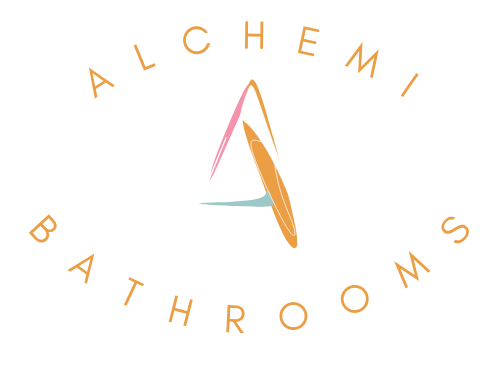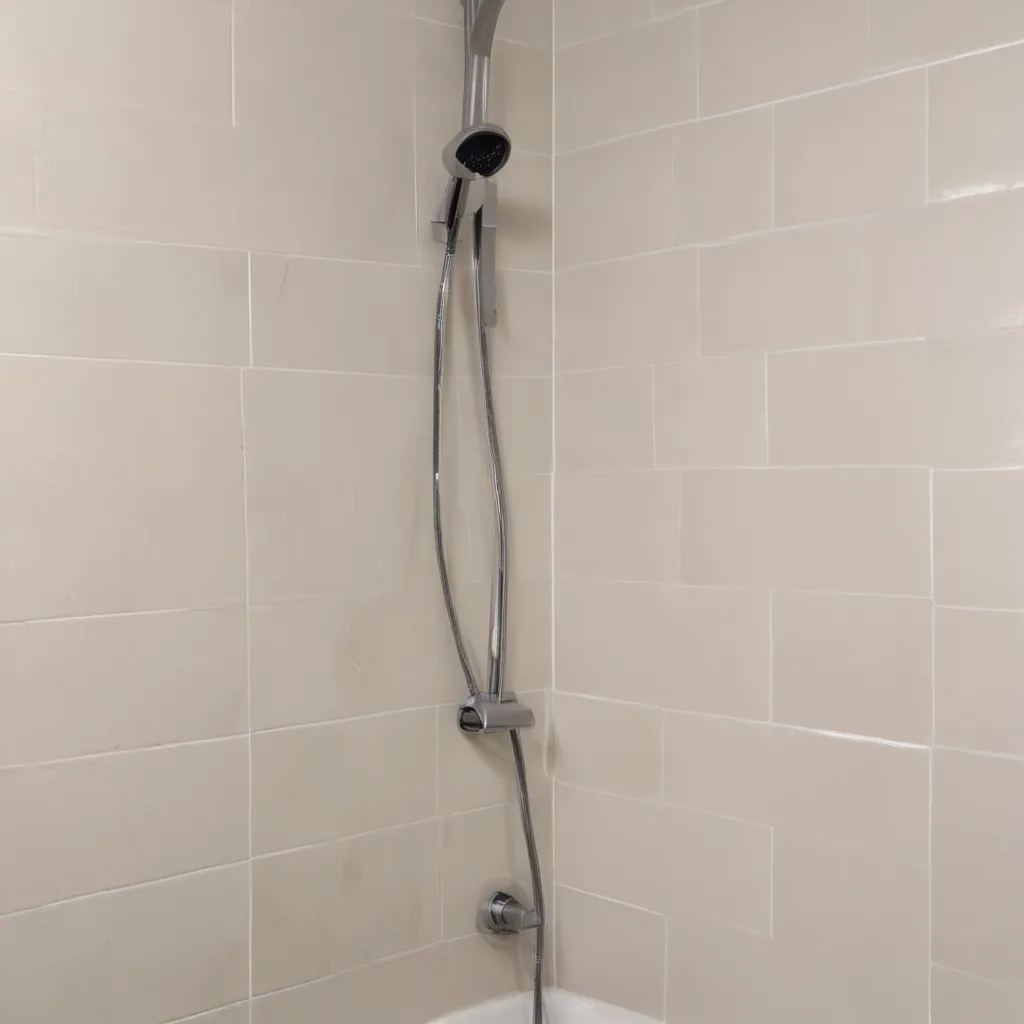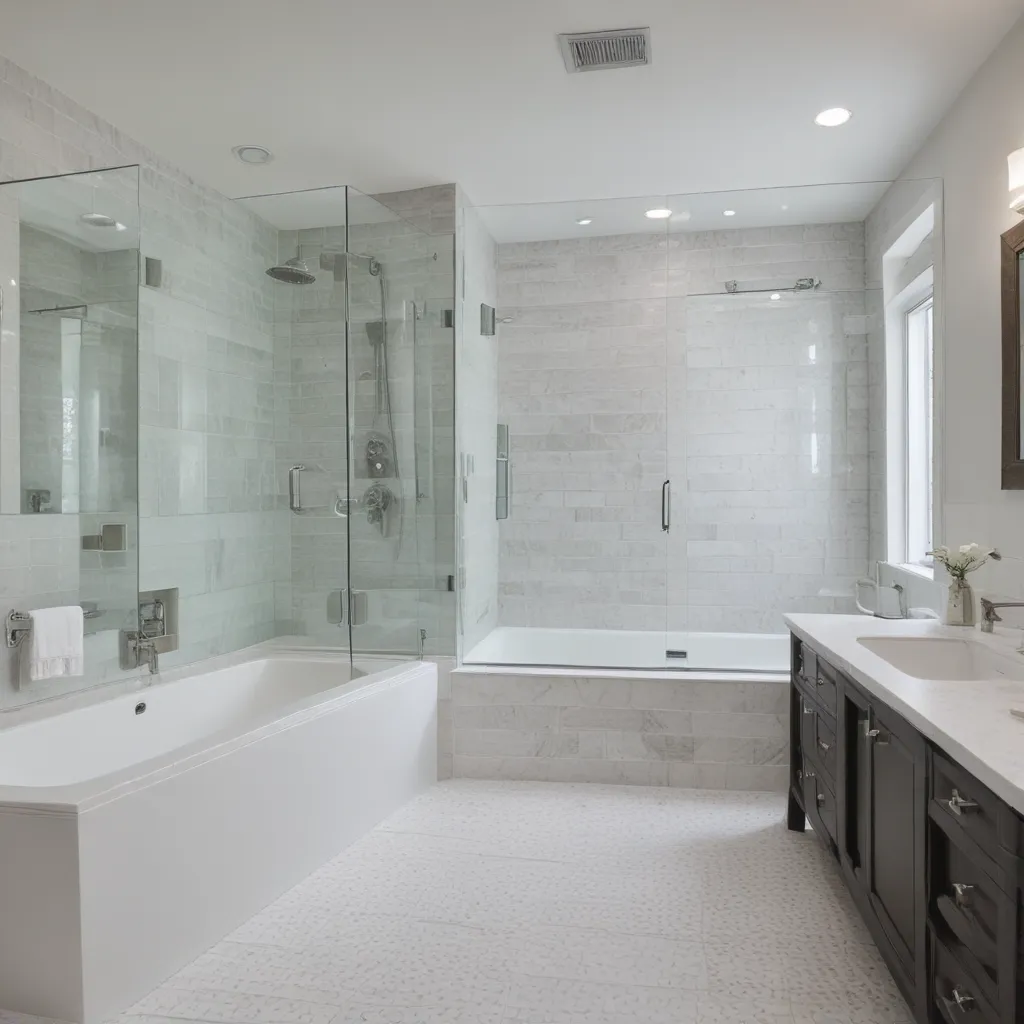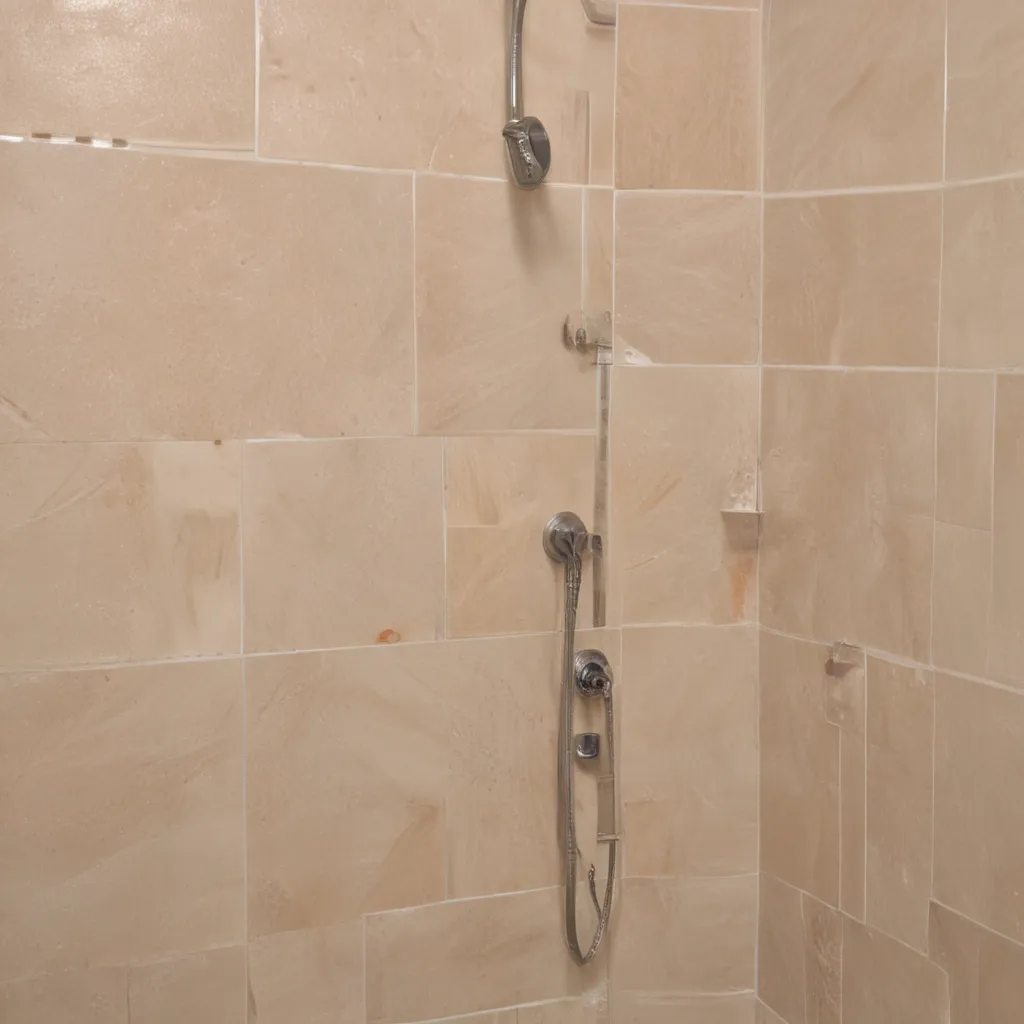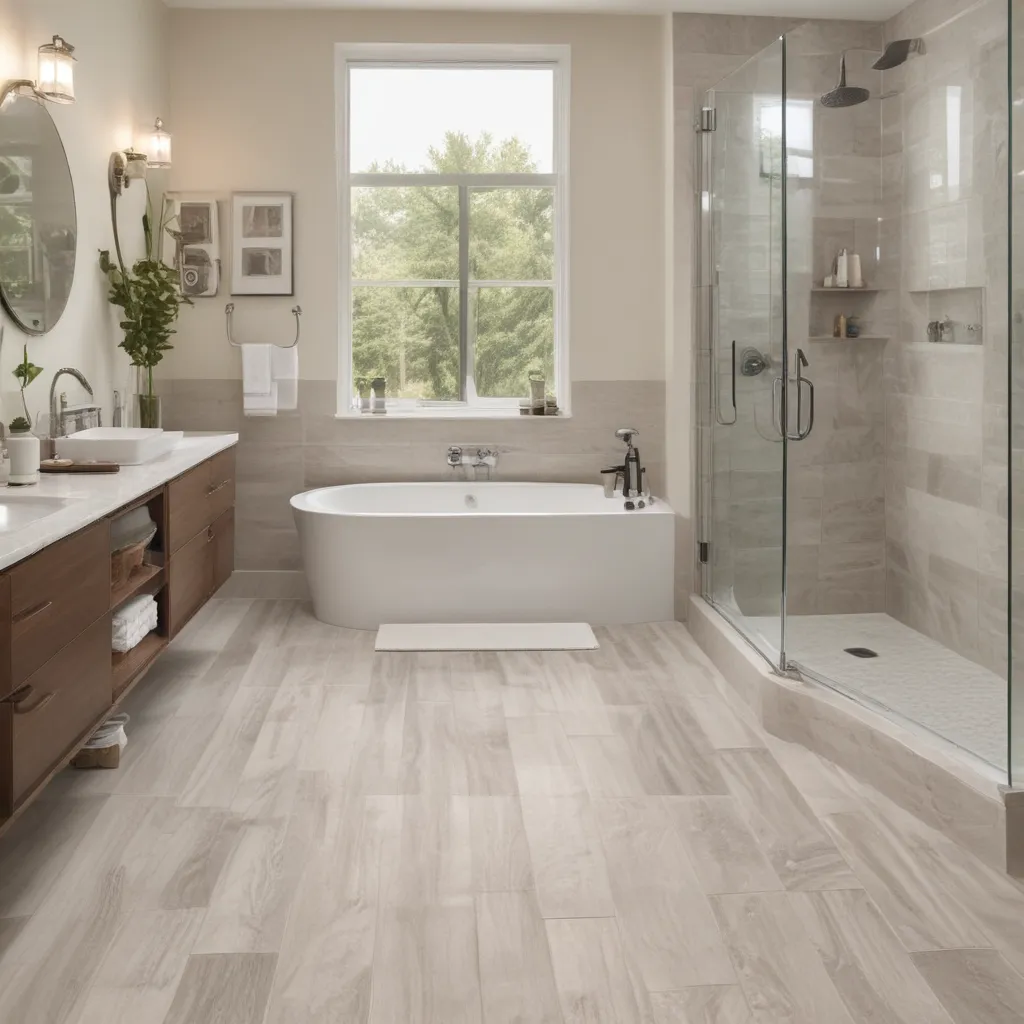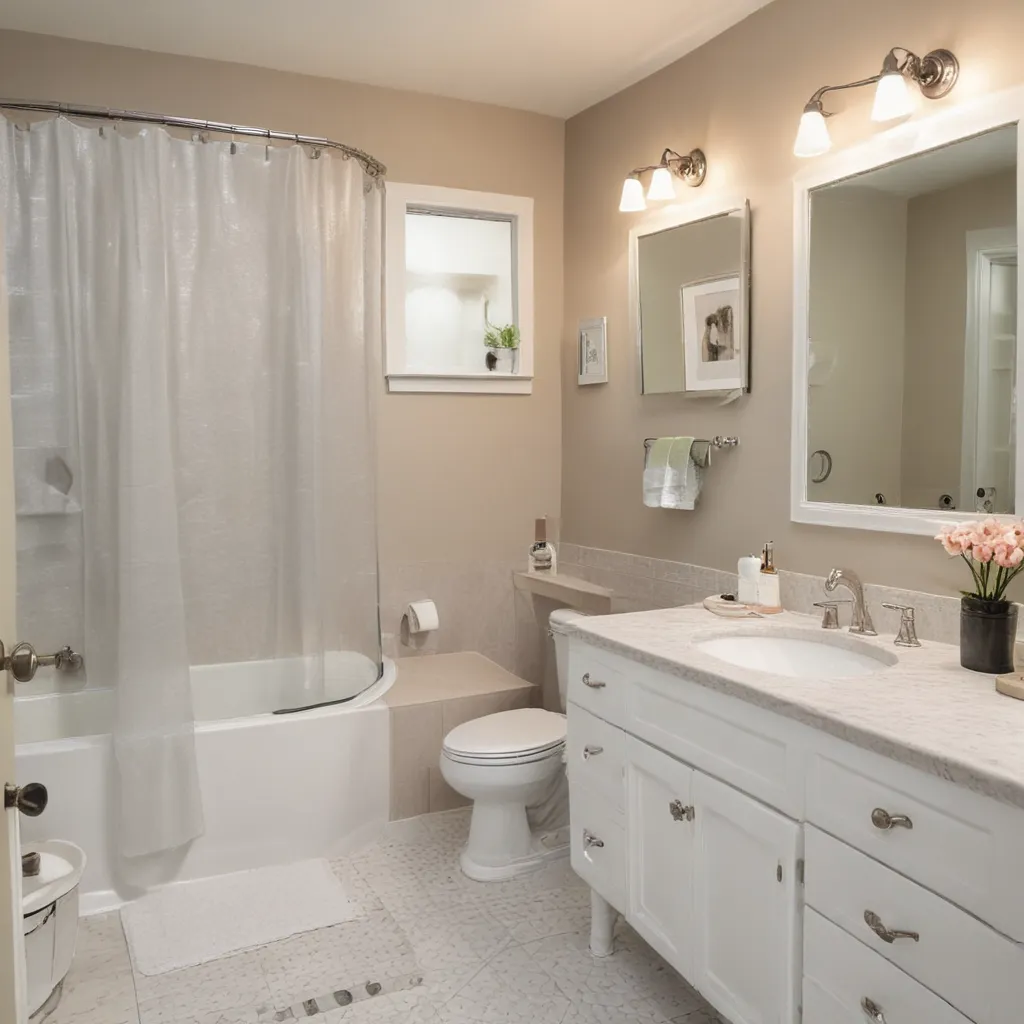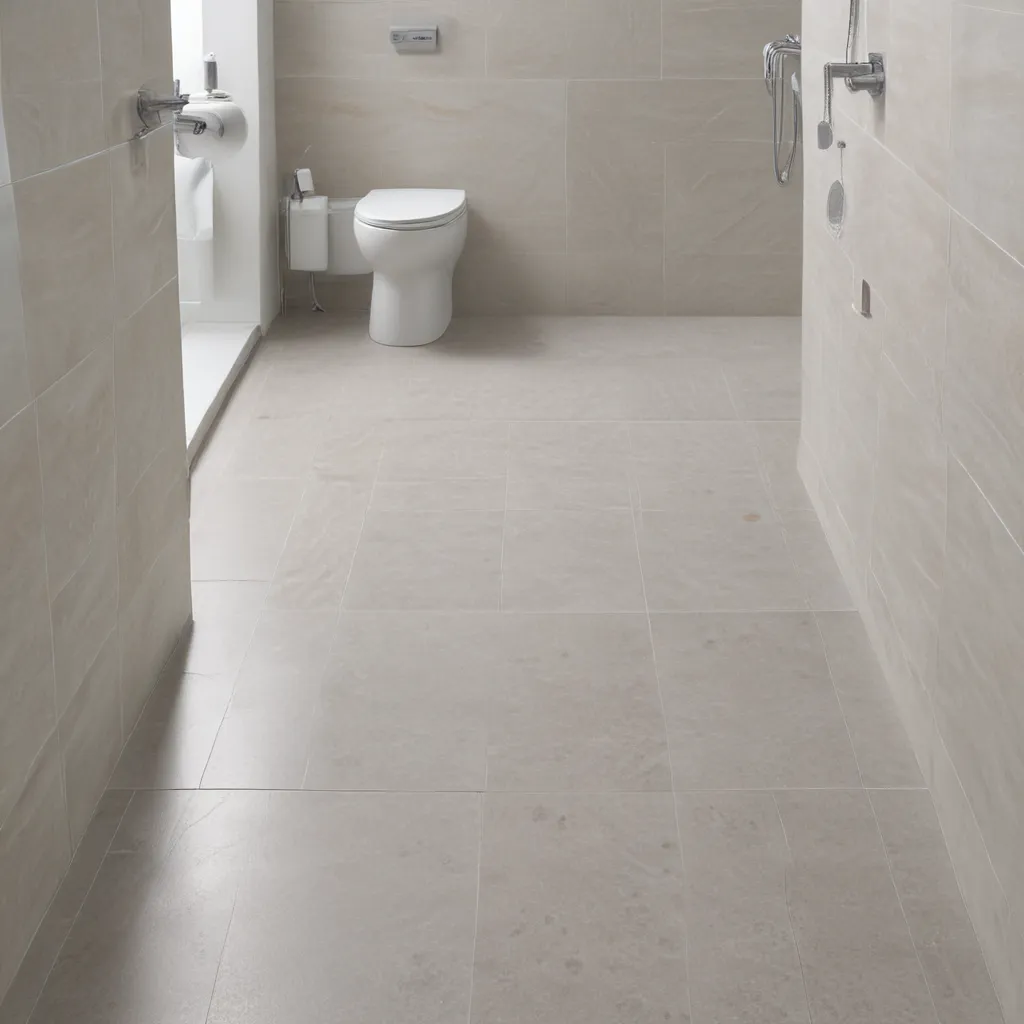
Stay Safe With Anti-Slip Bathroom Flooring
Have you ever had that heart-stopping moment when you step out of the shower or tub, only to feel your feet slip out from under you? I know I have, and let me tell you, it’s not an experience I’d wish on my worst enemy. Bathroom floors can be treacherous, especially when they’re slick with water, soap, or other slippery substances. That’s why investing in the right anti-slip flooring solutions is so important – not just for your safety, but for the peace of mind of everyone who uses your bathroom.
As someone who’s had my fair share of bathroom mishaps, I can tell you that a good set of anti-slip tiles or coatings can make all the difference. It’s like having a trusty sidekick to hold your hand (or feet, in this case) and keep you steady, even when things get a little slippery. And let’s be real, who doesn’t want to feel like a superhero when they’re just trying to, you know, take a relaxing soak?
But it’s not just about the thrill of avoiding a potentially painful fall. Anti-slip bathroom flooring is a must-have for anyone who values their wellbeing, especially those with mobility issues or young children who might be more prone to accidents. Imagine the relief of knowing that your bathroom is a safe haven, a place where you can move around with confidence instead of constantly worrying about taking a tumble.
Now, I know what you’re thinking – “But won’t anti-slip tiles ruin the aesthetic of my bathroom?” Fear not, my friend! The days of boring, utilitarian-looking anti-slip surfaces are long gone. Nowadays, you can find a wide range of stylish and sophisticated options that will have your bathroom looking like it belongs in a magazine, all while keeping you safe and secure.
From sleek, textured porcelain tiles to elegant natural stone, the possibilities are endless. And let’s not forget about the fun stuff, like patterned vinyl or even custom-designed mosaic tiles. Your bathroom can be a veritable work of art, with the added bonus of being slip-resistant. It’s like having your cake and eating it too, but without the risk of accidentally face-planting into it.
So, if you’re tired of tiptoeing around your bathroom, always on the lookout for potential hazards, it’s time to take action. Invest in some top-notch anti-slip flooring solutions, and say goodbye to those nerve-wracking moments. Your safety, and the safety of your loved ones, is worth far more than any aesthetic concerns. Plus, think of all the money you’ll save on hospital bills and physical therapy (not to mention the embarrassment of having to explain how you ended up with a broken tailbone).
Ready to take the plunge? Let’s dive in and explore the world of anti-slip bathroom flooring. Together, we’ll find the perfect solution to keep you safe, stylish, and sane. After all, who needs the adrenaline rush of a bathroom acrobatics routine when you can have the peace of mind that comes with a secure, slip-resistant surface?
The Slippery Slope of Bathroom Floors
Bathrooms are notorious for being slippery, and it’s not hard to see why. Between the constant presence of water, soap, and other bathroom products, the floor can quickly turn into a treacherous skating rink, just waiting to trip you up. And let’s not forget about the added factor of condensation, which can turn even the most innocuous-looking tiles into a veritable ice rink.
I’ll never forget the time I stepped out of the shower, feeling like I was on cloud nine after a relaxing soak, only to suddenly find myself airborne, headed for a painful rendezvous with the floor. It was like someone had greased the tiles while I wasn’t looking, and I was the unsuspecting victim of their cruel prank. Luckily, I managed to catch myself before any major damage was done, but the memory of that heart-stopping moment still haunts me to this day.
And it’s not just me, either. Thousands of people every year find themselves in similar predicaments, with many suffering from serious injuries like broken bones, head trauma, or even life-altering consequences. It’s a sobering thought, but it’s the reality we’re facing when it comes to the dangers of slippery bathroom floors.
But here’s the thing – it doesn’t have to be this way. With the right anti-slip solutions, we can turn our bathrooms into sanctuaries of safety, where the only thing we have to worry about is how to best enjoy our soak or shower. It’s all about finding the perfect balance between style and practicality, and that’s where the magic of anti-slip flooring really shines.
Choosing the Right Anti-Slip Flooring
Now, when it comes to anti-slip bathroom flooring, the options can be a bit overwhelming. Do you go with ceramic tiles? Porcelain? Natural stone? Vinyl? The choices seem endless, and it can be tough to know where to start. But fear not, my friends, I’m here to guide you through the process and help you find the perfect solution for your bathroom.
One of the key factors to consider is the slip resistance rating, or the Coefficient of Friction (COF) [1]. This is a measure of how much traction the surface provides, and it’s crucial when it comes to bathroom floors. Ideally, you want to look for tiles with a COF of 0.6 or higher, as this will provide the necessary grip to keep you firmly planted, even when things get a little wet and slippery.
But it’s not just about the COF – the texture of the tiles also plays a big role. Tiles with a more pronounced texture, such as those with raised patterns or embossed designs, tend to offer better traction than smooth, glossy surfaces. [2] It’s like having a built-in anti-slip feature, right at your feet.
And let’s not forget about durability. Bathrooms are high-moisture environments, so you’ll want to make sure your chosen tiles can withstand the constant exposure to water without losing their integrity. [2] Trust me, the last thing you want is to have your fancy new anti-slip tiles start to crumble and crack, leaving you back at square one.
Of course, aesthetics are important too. After all, you want your bathroom to look and feel like a luxurious oasis, not a sterile hospital ward. Luckily, there’s no shortage of stylish, slip-resistant options out there, from classic natural stone to bold, patterned ceramics. [3] It’s all about finding the perfect balance between function and fashion.
Installation and Maintenance
Okay, so you’ve done your research and found the perfect anti-slip tiles for your bathroom. Now comes the fun part – installation! Now, I know what you’re thinking – “But I’m no DIY expert. How am I supposed to tackle this project without ending up with a disaster on my hands?”
Fear not, my friends, because with the right guidance, even the most novice of handypeople can tackle this task with confidence. It all starts with proper preparation – making sure the surface is clean, dry, and free of any debris or imperfections. [4] From there, it’s just a matter of carefully applying the adhesive, laying the tiles, and finishing up with a grouting and sealing process.
And let’s not forget about the maintenance aspect. After all, the best anti-slip tiles in the world won’t do you much good if you don’t keep them in tip-top shape. [5] That means regular sweeping, gentle cleaning, and prompt attention to any spills or buildup. It’s like keeping your car in pristine condition – a little bit of TLC goes a long way.
But don’t worry, it’s not as daunting as it sounds. A few simple steps, like using a soft-bristle brush and avoiding harsh chemicals, can go a long way in preserving the slip-resistant properties of your tiles. [5] And trust me, the peace of mind you’ll feel knowing that your bathroom is a safe haven is more than worth the small investment of time and effort.
Affordable and Accessible Solutions
Now, I know what you’re thinking – “All of this anti-slip flooring sounds great, but it’s probably going to cost me an arm and a leg, right?” Well, my friends, I’m here to tell you that there are plenty of affordable and accessible options out there, no matter your budget or DIY skill level.
For starters, let’s talk about the cost of anti-slip tiles. While the price tag can vary depending on the material, size, and design, you can easily find high-quality options that won’t break the bank. [6] And with a little bit of savvy shopping, you might even be able to score some killer deals at your local home improvement store or online retailer.
But what if you’re not quite ready to tackle a full bathroom renovation? No problem! There are plenty of other anti-slip solutions that you can implement without breaking the bank. [7] From specialized coatings and treatments to non-slip mats and rugs, the options are endless, and they can make a world of difference in terms of keeping your bathroom safe and secure.
And let’s not forget about the accessibility factor. Anti-slip flooring isn’t just about looking good – it’s about ensuring that everyone, regardless of age or ability, can move around your bathroom with confidence and ease. [8] Whether you’re caring for an elderly loved one or have a little one who’s just learning to navigate the world, these safety-focused solutions can be a true game-changer.
So, don’t let the cost or complexity of anti-slip flooring deter you. There are plenty of affordable and user-friendly options out there, just waiting to transform your bathroom into a veritable oasis of safety and style. It’s time to take that first step towards a slip-free future, and trust me, your future self will thank you for it.
Conclusion
As I sit here, reflecting on the importance of anti-slip bathroom flooring, I can’t help but feel a deep sense of gratitude for the innovative solutions that are out there, waiting to keep us safe and secure. Gone are the days of slipping and sliding our way through our daily ablutions, wondering when the other shoe (or, in this case, the entire body) is going to drop.
With the right anti-slip tiles, coatings, and accessories, we can reclaim our bathrooms as the sanctuaries of relaxation and rejuvenation that they were always meant to be. No more white-knuckle moments as we step out of the shower, no more frantic scrambling to regain our balance. Instead, we can move with confidence, knowing that our floors have our backs (and our feet) every step of the way.
So, what are you waiting for? It’s time to take the plunge and invest in some top-notch anti-slip flooring solutions. Your safety, and the safety of your loved ones, is worth far more than any aesthetic concerns or budgetary constraints. Trust me, the peace of mind you’ll gain will be worth its weight in gold (or, in this case, slip-resistant tiles).
Happy (and safe) bathing, my friends! May your floors be as solid as your footing, and may your bathroom adventures be free from the threat of unexpected acrobatics. Here’s to a future filled with worry-free soaks, secure showers, and the knowledge that you’ve taken the necessary steps to keep yourself and your family safe. Cheers to that!
[1] https://slipdoctors.com/collections/anti-slip-coatings-for-floors
[2] https://slipnomore.com/non-slip-floor-tiles-for-bathroom/
[3] https://www.thehandmadehome.net/bathroom-flooring-inspiration/
[4] https://www.justanswer.com/home-improvement/hemim-type-floor-mat-rug-best-lvp-flooring.html
[5] https://www.pinterest.com/ideas/non-slip-bath-mat/927135205990/
[6] https://www.agingcare.com/questions/safe-alternative-for-bath-mats-478901.htm
[7] https://epilepsyfoundation.org.au/managing-epilepsy/health-and-wellbeing/safety-at-home/bathroom/
[8] https://www.affordablewalkinshower.com/blog/non-slip-shower-and-bathroom-floor-options
